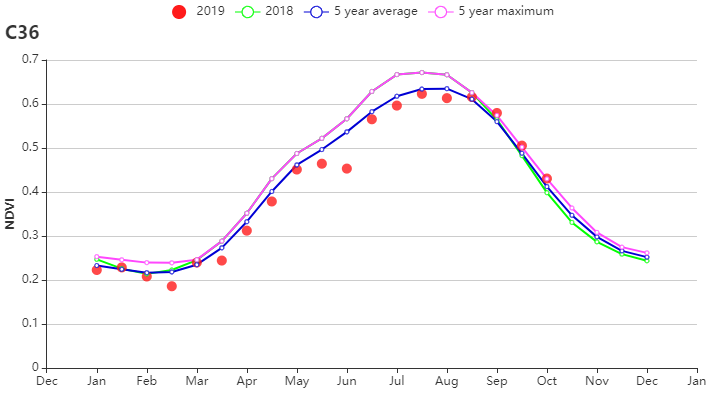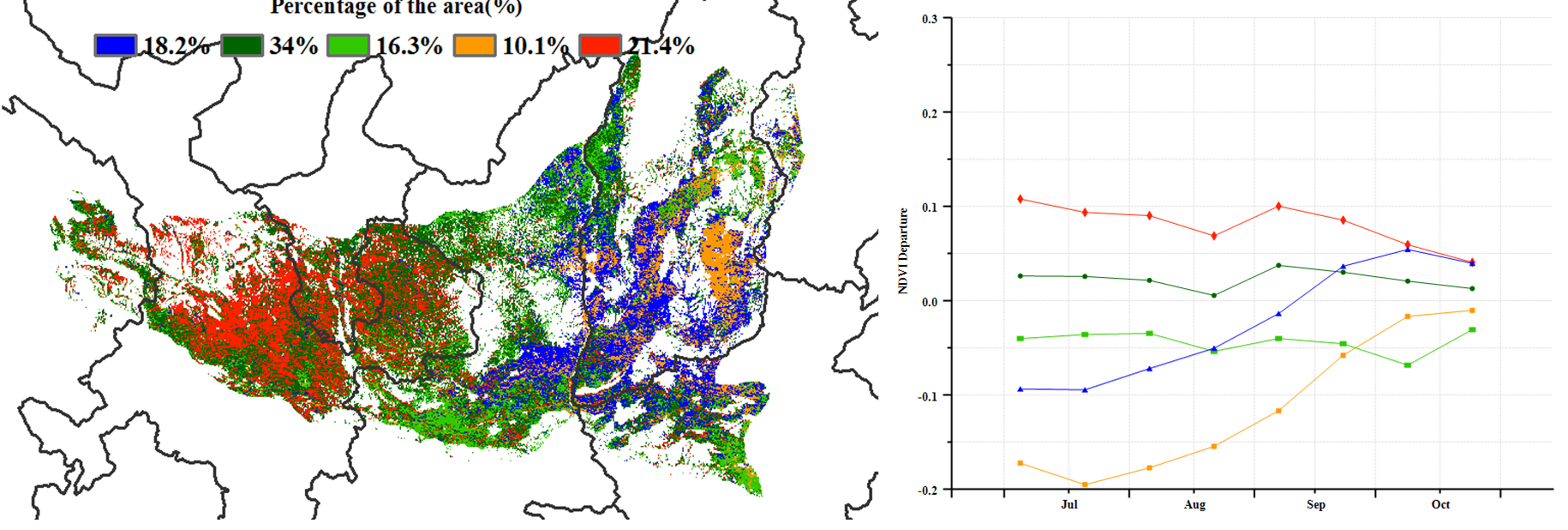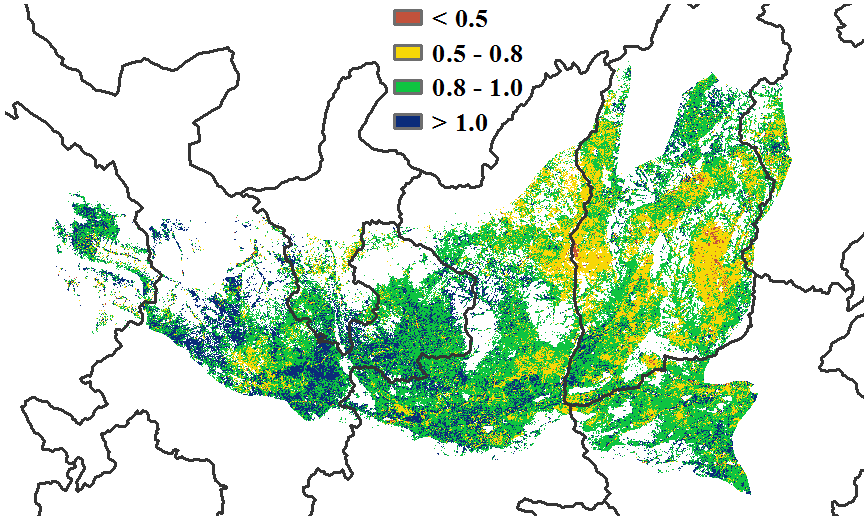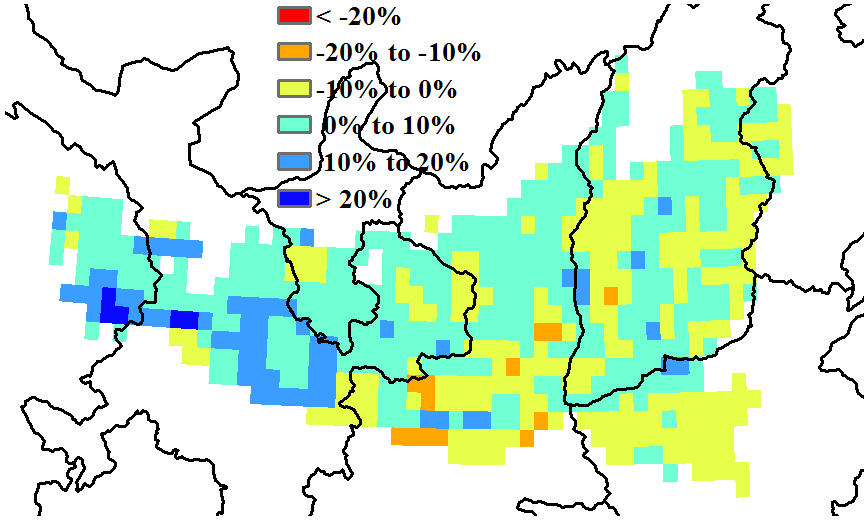Maize was harvested in late September and early October, and winter wheat has been planted at the end of the monitoring period. According to the crop condition development graph based on NDVI, crops were gradually ripening from August to early September, after which they were harvested from mid-September to the end of the monitoring period. The temperature (TEMP, 0.0℃) was same as average while radiation was above average (RADPAR, +2%). Shortage of precipitation (RAIN -6%) resulted in potential biomass production (BIOMSS) to be below average (-1%). In most of the area, the analyses based on spatial NDVI clusters and profiles are consistent with VCIx.
The most favorable conditions(compared to the five-year average) occurred mainly in the southern part of Ningxia, the most region of Gansu, the south central part of Shaanxi and some regions in southwest and northeast of Shanxi, and western of Henan from July to October, due to favorable agroclimatic conditions. In contrast, because of drought during the monitoring period (as confirmed by the maps of potential biomass)—crops were in unpromising condition in northeast of Shaanxi and central Shanxi. Moreover, the cropped arable land fraction (CALF) increased by 9% compared with recent years, resulting in a relatively promising crop production outlook for the region.
黄土高原区的玉米在 9 月下旬至 10 月上旬收获,监测期内冬小麦也已经完成播种。基于 NDVI 的作物生长过程线显示,8 月下旬至 9 月中旬,作物逐渐成熟,之后进入收割期。农气指标监测结果显示,全区温度与平均水平相近,光合有效辐射偏高 2%,比平均水平偏低6%的降水导致潜在生物量偏低1%。基于 NDVI 的聚类图和相应的类别过程线反映出的作物长势空间态势与最佳植被状况指数图在大部分区域具有高度的一致性:得益于适宜的农业气象条件,宁夏南部、甘肃大部分地区、陕西中南部、山西西南和东北部以及河南西部等地作物长势优于黄土高原区的其它地区。相反,受旱情的影响,陕西东北部和山西中部大部分地区,作物长势明显偏差。全区耕地种植比例较近 5 年平均水平偏高9%,该地区的作物生产形势总体良好。

图.X 基于NDVI的作物生长过程线

图.X NDVI距平聚类图(与5年平均相比)

图.X 最佳植被状况指数

图.X 潜在生物量距平(与5年平均相比)
